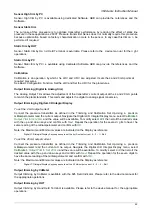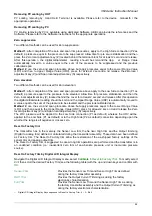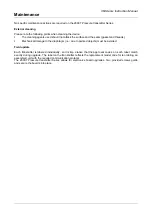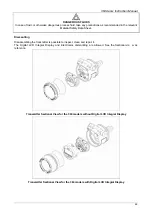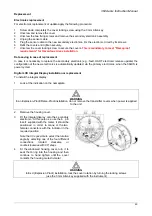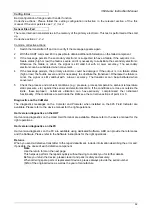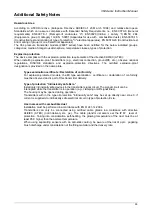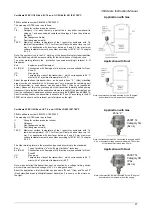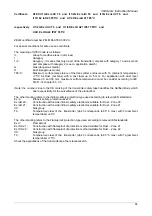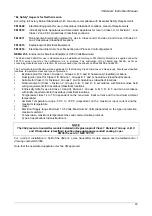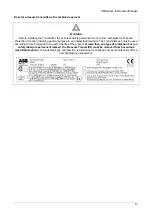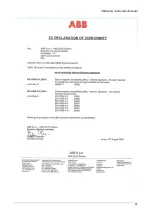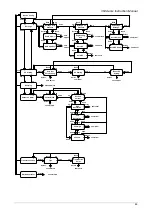
364Ax-Gx Instruction Manual
55
Additional Safety Notes
Hazardous Area
According to ATEX Dire ctive (European Directive 94/9/EC of 23 Ma rch 1994) and relative Euro pean
Standards which can a ssure compliance with Essential Safety Requirements, i.e., EN 6 0079-0 (General
requirements) EN 6007 9-1 (Flameproof enclosures “d”) EN 50020 (Intrinsi c safety “i”) EN 50 284
(Equipments, group II, category 1G) EN 50281 (Apparatus for use with combustible dusts), EN 60079-15
(Construction test and marking of type of protection "n" electrical apparatus), EN 60079-26 (Construction test
and marking of group II zone 0 electrical apparatus).
The 364 pressure transmitter models (2600T series) have been certified for the below indicated groups,
categories, media of dangerous atmosphere, temperature classes, types of protection.
Explosion protection
The device complies with the explosion-protection requirements of the directive 94/9/EC (ATEX):
When installing explosion-proof transmitters (e.g., electrical connection, ground/PE, etc.), observe national
regulations, DIN/VDE standards and explosion-protection directives. The certified explosion-proof
designation is provided on the name plate.
Type examination certificate / Declaration of conformity
For explosion-protected models, the EC type examination certificate or declaration of conformity
must be observed and is part of this transmitter delivery.
Type of protection “Intrinsically safe Ex ia”
Install only intrinsically safe devices in the transmitter signal circuit. The signal circuit can be
interrupted while the transmitter is in operation (e.g., clamping on/off signal lines).
The housing may be opened during operation.
Transmitters with in the type of-protection "intrinsically safe" may be set up directly near zone 0, if
current is supplied via intrinsically safe electrical circuit in type of protection Ex ia.
Use in areas with combustible dust
Installation must be performed in accordance with EN 61241-14:2004.
Transmitters can only be connected using certified cable glands in a ccordance with directive
94/9/EC (ATEX) (not in delivery sco pe). The cable gland m ust also me et the IP 67 level of
protection. Taking into consideration self-heating, the glowing temperature of the du st must be at
least 85 K higher than the ambient temperature.
When using separating sensors with an anti-stick coatin g, be aw are of the risk of a pro pagating
brush discharge under consideration of the filling material and the delivery rate.


